Discussed in this post:
3 books (Geronimo: His Own Story, How Forests Think, and Mausoleum of Lovers);
1 movie (Underground);
4 documentaries ((T)ERROR, Land Without Bread, Night & Fog, and There’s Something Wrong with Aunt Diane).
Books
1. Geronimo: His Own Story edited by S. M. Barrett.
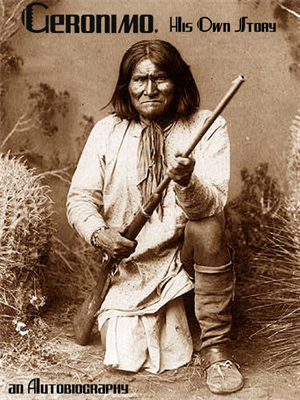 .
.
Geronimo (Goyahkla — One Who Yawns) is one of those seemingly larger than life heroes of Indigenous resistance to settler colonization, lies, invasions, broken treaties. His name sits with other Apache greats — Cochise, Naiche, Mangas Colorados, Whoa, and Victorio all come to mind. People who valued their traditions, cared for their people, valued freedom, honoured treaties, and loved the land (“land” meant in the more all-encompassing sense it carries in Indigneous traditions on Turtle Island, rather than in the more limited sense imparted by settlers). Geronimo, like these others, was (for part of his life at least) a freedom fighter and a master of what would come to be called guerrilla warfare (hence, much to the chagrin of Geronimo’s great-grandson, Osama was nicknamed Geronimo in the American Special Forces Op to kill him — and probably much to the chagrin of Geronimo American paratroopers would call his name before jumping into enemy-occupied territory in WWII).
It was interesting to read his story and here him relate his life in his words, highlighting what he thinks is important. Not mentioning what is not important. Part of what is intersting is how he ties himself back to the Apache creation story and the origins of the Apache and their territories. I am discovering this is not uncommon in Indigenous story-telling and I find it interesting. What changes when we see our stories beginning at the beginning? What connections and priorities are made or altered? I have often thought that our lives begin long before we are born and who we will be is shaped, well, everything that came before us, so it is interesting to find this point of connection with Indigenous story-telling. The whole story is quite fascinating, a quick read, and I recommend it.
That said, I can’t help but wonder how much of what is contained in this text is, in fact, Geronimo’s own story. Geronimo spoke his story, in Apache, to Asa Daklugie (the son of Whoa, who was a friend of Geronimo’s and who had difficultly with public speaking and so Geronimo had often spoken for him in gatherings and at meetings). Asa, in turn, translated with Geronimo said into English and spoke it to E. M. Barrett, an American who then recorded what he was told. This recorded text was then further “revised and edited” by another American, Frederick Turner. The American military was also consulted and the President was involving in commissioning the text. So it’s a little hard to tell how much the text has been altered or shifted in subtle but perhaps significant ways. How much was Asa able to convey Geronimo’s words into English? How much influence did the American recorder and editor have on the words that appear as Geronimo’s? For example, when Geronimo uses the word “primitive” to describe the beliefs of his people is that the word he used or is Asa using a word he knows would be more familiar to the American discourse regarding Indigenous beliefs, or did Barrett or Turner substitute that word into the text because they felt it was an appropriate and equal replacement word to summarize what Asa translated? Or, then again, given that Geronimo was very intelligent and often tricky, was he using a word he knew the Americans would appreciate even though he didn’t believe it himself? Indeed, given Geronimo’s intelligence, one is bound to wonder how much he is finding a way to still pull a fast one on the Americans who are keeping him in captivity.
2. How Forests Think: Toward an Anthropology Beyond the Human by Eduardo Kohn.
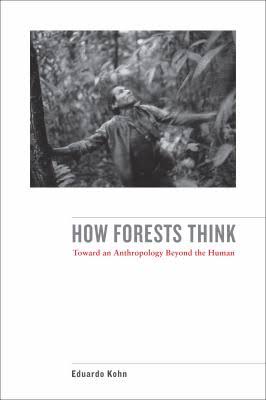
It has been awhile since I read a book that was such a sustained epistemological exercise. It was interesting to return to that subject after so much of my readings have been dominated by what I suppose are ultimately ethical concerns (with some forays into ontology or metaphysics but even these, like a lot of the stuff I read and have read about language and ideology is also ethical in content or only the smallest fraction removed from being explicitly ethical). Of course, Kohn does have an ethical intent in writing what he does — he believes developing an anthropology beyond the human and understanding consciousness and thinking life (or living thought) as extending well beyond humanity (both into “bigger” entities — like forests — and “smaller” entities — like dogs but excluding things like rocks and possibly trees), is critical to the betterment and perhaps even survival of humanity given the ways in which the anthropocentrism and technological advances of the anthropocene seem hellbent on decimating life on earth.
However, I found Kohn’s book to be… different than I imagined it being. The focus on Peircean semiotics was a genuine surprise. It was interesting (not a lot of the semiotics I’ve read pay much explicit attention to him) but a lot of it felt quite heavily Platonic. At this point, I’ve kind of developed a Pavlovian negative reaction to anything that smacks of Platonism but I’ve been scratching my head a bit about that this time around since Kohn’s Platonism is placed in service of what might be termed a shamanic materialism. I actually really like this shamanic materialism — it is kind of where I’ve been going in my own life these days, but Kohn and I part ways in that he is so heavily focused upon thought (living thought), whereas I’m curious in exploring unthinking life. I looked for commonality in his emphasis on the importance of the non-linguistic elements of semiosis and communication but there is a purity to his icons and indexes that I find hard to believe because I think all semiotics are fundamentally ideological and I don’t believe the Real is so readily knowable and thinkable as Kohn asserts (although it’s a seductive — even tempting, to use a term Kohn explores and deploys — idea to think it can be that way!). Instead, again, I’m more curious in how communication and experiences occur in thoughtless ways. But I need to think (ha!) about all of this more. I’d love to try and converse with Kohn on some of these things and am hoping to track him down for an author’s interview. So, hey, why not read this book for yourself and share your thoughts (or thoughtlessness!) with me, too. Recommended reading.
3. Mausoleum of Lovers by Hervé Guibert.
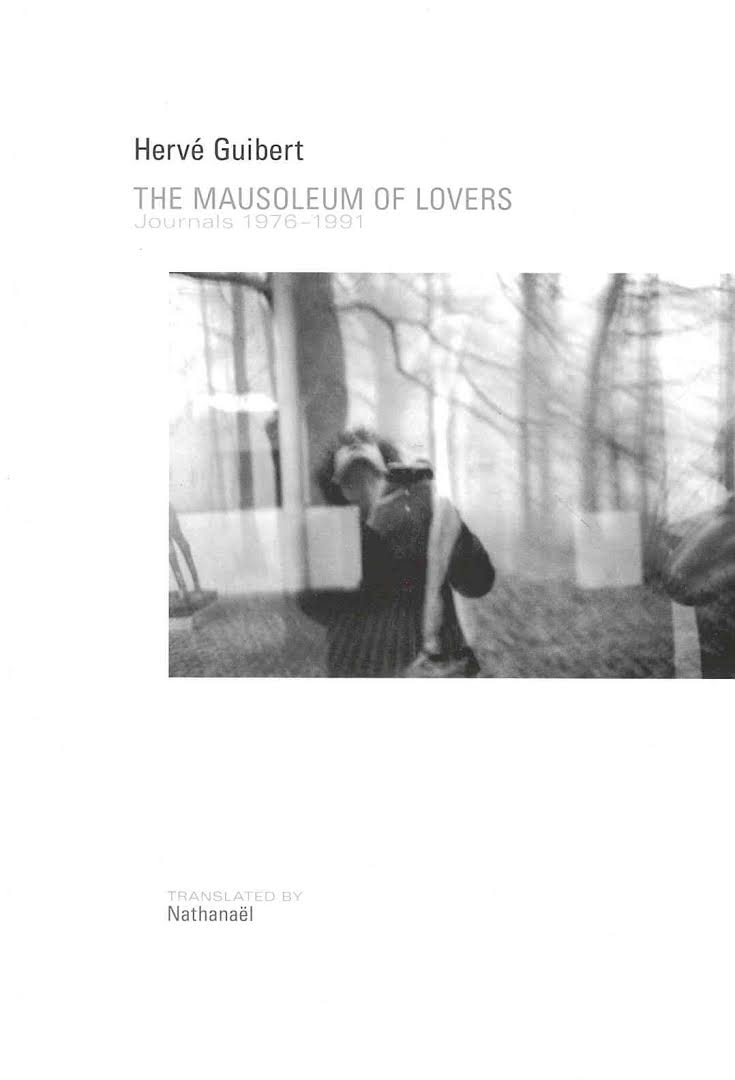
I really wanted to like this book. It came highly recommended from a source I respect and has been compared to Knausgaard’s six volume Struggle (the English translation of Volume Five drops this month!) only a lot more French in tone and focus and stereotype than the more stereotypically Norwegian (or Scandinavian) elements of Knausgaard’s story. Plus, it has a really great title — and I hoped the quality of the title pointed to the quality of the material that followed. But I was sorely disappointed and found myself forcing myself to plough through it. For months. Breathing a sigh of relief after making it through every ten pages. So I did what I have almost never done before. Once I passed halfway and still felt the same, I took out my bookmark and shelved it. So many better books, including better French books, including better French books with a focus upon gay male sexuality, than this one. Life’s too short and I don’t recommend this one.
Movies
1. Underground (1995) directed by Emir Kusturica.
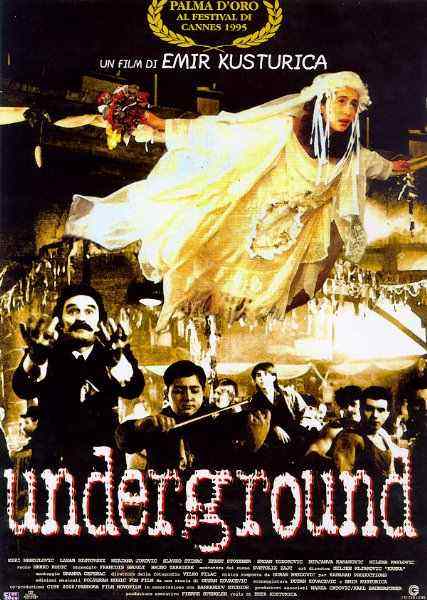
Underground feels like a Serbian version of The Deer Hunter. There is war (unending war) but also wedding parties that go on for nearly as long (and, in juxtaposition to The Deer Hunter, it is the war parts that seem to drag, whereas in Cimino’s film it was the wedding party that seemed overly long). The joie de vivre of the main characters is infectious – especially during the first two thirds of the film — regardless of whether or not they are celebrating life or death (une petite mort can always add to the joie de vivre). It is a joy that is something like Lacan’s lawless jouissance, similar to the tone of Nietzsche’s Zarathustra as he praises the Übermensch who are beyond good and evil. It is infectious.
Underground is kind of like The Deer Hunter meets Terry Gilliam’s Brazil… except I think Kusturica is better at walking the absurdist line than Gilliam and so perhaps has more in common with Roy Andersson’s trilogy in terms of aesthetics.
Which is all a lot of fun… unless you’re a Muslim or a woman. In that case, the infection is more like HIV or Ebola. Because, when it comes to politics, Kusturica and Andersson (not to mention Gilliam) part ways (although I reckon Kusturica is still fairly consistent with Cimino on this score). Because Kusturica sure comes across as a lot more Christian and Serbian – and Christian Serbian in the Miloševićian sense – than Andersson who is a much more thoroughgoing nihilist (which does not exclude him from being a mystic).
For those unaware of religious and racial representations and dynamics in the Balkans during the ‘90s (and before and after) this is not immediately apparent. As a work of art, removed from its political context (and directorial intent – which I’ve already contended with and found ways to discard in last month’s review of The Hunt), Underground is a very creative, very fun, but somewhat overly long film. Unfortunately, I’m not convinced it can be responsibly decontextualized to this degree.
But this is an interesting statement. What ethics are brought to bear upon the ways we choose to view something like a film (or text or picture or sculpture or dance) and how do those ethics determine what is or is not a “responsible” form of engagement?
A lot of artists, of course, defend “art for art’s sake” and all that. But, without going into detail in that debate, I think there are limits to that (and a lot, but not all, of “pure art” defenders would think so too if pushed to extremes). The sticky issue is where those limits end up being drawn. I’ve concluded I just draw them where I want to draw them. In this case, a movie that glosses over genocide and romanticizes the perpetrators (and manages to pull off a Palme D’Or at Cannes thanks to the creativity and brilliance of the whole thing) is a problematical movie and cannot simply be discussed in an apolitical manner. In this case, an apolitical reading further contributes to the political objective of glossing over the Serbian genocide of the Bosnians/the Christian genocide of Muslims, and further romanticizes those doing the killings, painting them either as conflicted – in the sense of Žižek’s conflicted spy hero (or Batman) – or as the ones who were truly victims in the situation). What’s that Derrida said? Il n’y a pas de hors-politique (well, maybe he said something a little different but whatevs).
Perhaps, then, the appropriate parallel to Underground is The Birth of a Nation – a landmark film in terms of innovative techniques and storytelling power but, ya know, also massively racist and partially responsible for inspiring the re-formation of the Ku Klux Klan (American Sniper might be a close second here which does for current wars what films like The Deer Hunter did for Vietnam).
Documentaries
1. (T)ERROR (2015) directed by Lyric R. Cabral & David Felix Sutcliffe.

There was a fair bit of buzz around (T)ERROR but, I don’t know, it fell a little flat for me. Even though the movie it tells is fairly recent – and it has a previously unprecendented inside look at a moment in the life of an FBI informant (a fellow who betrayed the Black Panthers to rat for the feds after he was looking at some serious time back in the day) – it still kinda feels like old news. At this point, we all kinda know that the FBI can be shockingly inept and are basically placing guns in the hands of people who are far too lacking in intelligence or motives to be any kind of real threat to anyone in order to give stories to the media about foiling terror plots. We all know that this is conducive to a culture of fear, to expanding government and corporate powers, and to helping programs to expand already massive budgets. I guess what’s “new” about this film,then, is the inside look it gives into the character of the FBI information. But here there are little surprises (although maybe this is not the case for people removed from prison- or street-culture who don’t know as much about community solidarity and what might bring a person to betray friends in a community of mutual care in order to make personal profit). Still, I imagine it’s no surprise to discover that informants are people struggling with poverty and depression. In communities of people who are suffering, it’s not usually too hard to find one or two people willing to betray sell their (innocent) neighbours down the river in order to get ahead a little (although given that the majority of the middle and upper classes have made profits and personally advanced by stepping on others, we always seem more surprised by how few people are willing to sell others out rather than being surprised that some people are willing to harm others at all for personal profit). But, yeah, this all seems kind of played out to me in terms of the documentary content.
2. Land Without Bread (1933) directed by Luis Buñuel.

I’ve talked a lot about one of Buñuel’s other movies in a previous post but this is the film by him that I have been waiting to watch since I learned about him. It’s a short documentary about a region in Spain that still lived without many of the comforts of what we associated with “civilization”. People living in stone huts without windows or chimneys, struggling to find even the basics like clean drinking water or something that can be used to carry a dead child to the cemetery. It’s a fascinating look at a world that is not that old but that no longer exists. It felt like something out of Middle Earth or, perhaps more closely Aleksei German’s Hard to Be a God, as everything felt much more bleak than Tolkien’s bourgeois romanticism.
Still, one must wonder about and question this bleakness. Buñuel is not of the people he is filming and seemingly “primitive” living conditions, which leave marks on the bodies of those who inhabit them, are not necessarily a sign of sorrow or an undesired or undesireable life. It is easy to imagine “cultured” Europeans making similar documentaries about “savages” living in other places — Africa, Turtle Island — in conditions that appear deplorable to those accustomed to indoor plumbing, feather beds, and clean and heated homes. And I’m sure all the good, sensitive oppressors would wring their hands and cry, “something must be done!” and I’m sure the police and nurses (and military, but only when absolutely necessary) would do something… but it’s hard to know if the subjects on the receiving end would be more or less happy (or dead) when all is said and done.
(Tangentially, I watched this film in French in order to try and refresh some of my French so I’m sure that impacted my reading of it, although I did not find it too hard to follow along with what was happening.)
3. Night and Fog (1955) directed by Alain Resnais.
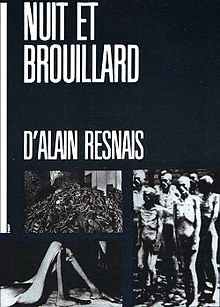
Another short film I watched in French, this documentary shows footage from the concentration camps during World War Two and immediately after the camps were liberated… if, that is, one can ever be liberated from such camps – are any of us liberated from these camps? Isn’t this why Jorge Semprún’s Long Voyage does not begin but actually ends when the train carrying him arrives at Auchwitz? Once camps like these are built are we not all forever after imprisoned in them even if the buildings are torn down and the grass grows over the Appelplatz). What can one say about such things? Watching this was far worse than any horror film I have ever seen.
In the discourse of crime, trauma, and sickness, some people started using the term “survivor” instead of “victim” because they felt the term “victim” was too negative, constrictive, condescending, and disempowering. After that shift, still others came along and objected to the term “survivor” for similar reasons and started suggesting that the language of “victor” or “conqueror” were better. That’s all well and good but… well… there are some things we cannot conquer or triumph over even if we bring them to an end. Things like the Holocaust, things like genocide, things like mass extinctions, these things can be stopped but, once performed, they cannot be conquered. They can only be survived.
Survived and hopefully not forgotten so that they are not repeated. But we have not learned this lesson. We remember and yet genocide persists. Where does this lead us? Whither survival? I don’t know but I suspect it will increasingly have a lot to do with how much money you have, who you know, and who you’re willing to toss onto the bonfire in order to make sure you don’t get burned. With civilization what can one say? Plus ça change, plus c’est la même chose.
4. There’s Something Wrong with Aunt Diane (2011) directed by Liz Garbus.
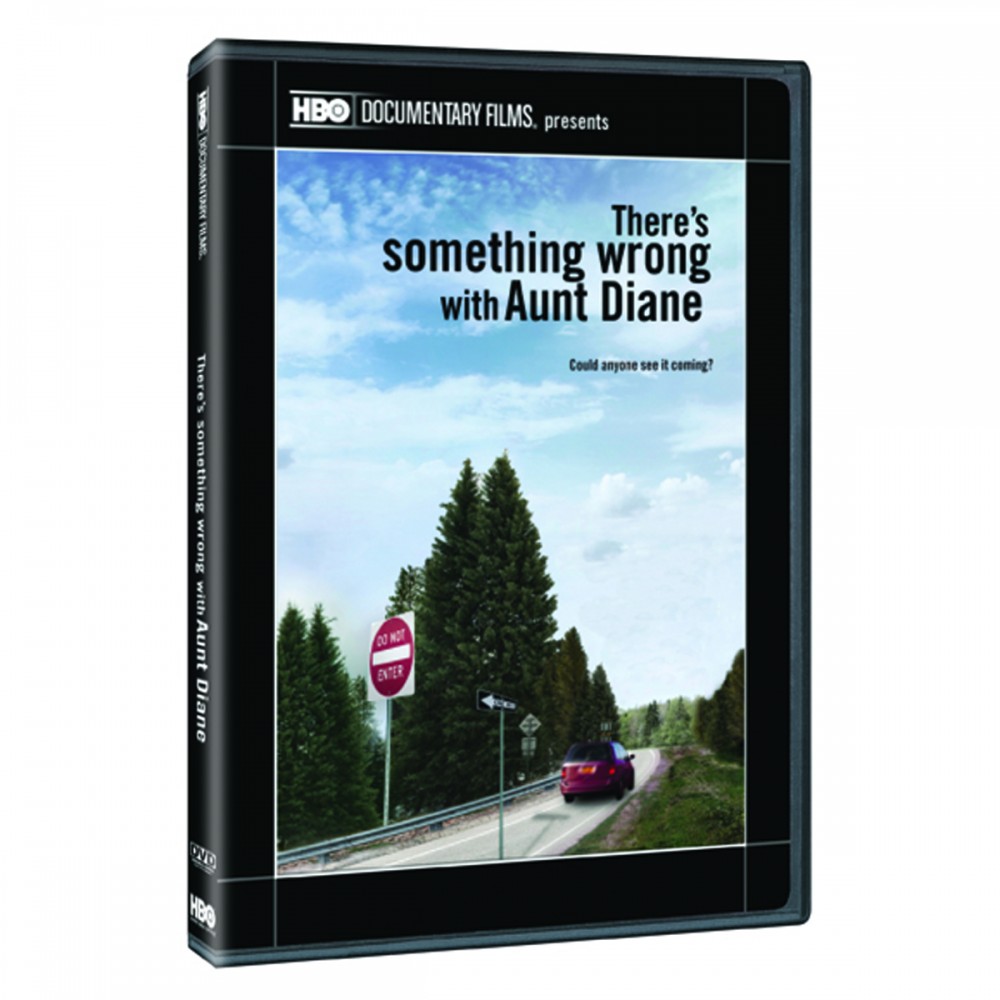
To those who were in her life — extended family members, co-workers, some friends — Diane Schuler seemed to have it all together. She was very successful in her career and a loving and very involved mother and aunt — finding time to put together photo scrapbooks of the kids after working a full day at her job and then coming home and doing all of the household duties involved with parenting two small children (and one husbands, whose parents describe him as her third child). She appeared to be intelligent, in control, successful and, for the most part, content. And then, coming back from a family camping trip, she got onto the expressway, speeding and going in the wrong direction for 2 miles. She crashed head-on with another vehicle and killed herself, her three small nieces, her own daugher, two adults in the other vehicle, and seriously injured her infant son.
After the crash, the police toxicology report showed her blood alcohol level at 1.9% (and further testing verified this) and also showed a high level of THC in her system (although it’s harder to determine how recently the THC got there). This seems to come as a shock to the extended family and even to Diane’s husband who swears that Diane was not an alcoholic and had no issues with substance use.
Now, how one then goes on to make sense of this event — and multiple theories are available online the most plausible four (in my opinion) being: (1) that Diane was an unhappily married closet alcoholic with a husband who worked nights and so, being as smart and in control as she was, she was able to hide this from everyone (she could drink while her husband was at work, she drank vodka which is preferred by closet drinkers because it is harder to detect, and she could have easily been replacing the vodka bottle her husband claims they drove back and forth between camping and the house since his wife hardly drank) until she lost control the day of the crash (there are holes in this theory as it doesn’t explain a lot of the other erratic behaviour that day, like the stopping and starting and phone calls to family that caused them to panic and try to come out looking for it or call the police); (2) Diane had recently been prescribed Ambien and did not realize that taking this and following it with some booze (perhaps to numb the pain from her toothache) can lead people to black-out and engage in completely out of character self- and other- destructive behaviour, and this led to the crash (there are holes in this theory, namely it’s hypothetical nature and I never actually found an official link proving she had an Ambien prescription); (3) the crash was actually a premeditated murder/suicide, which would fit with witnesses who saw Diane checking out that section of highway going the write direction before going back the wrong way (to a spot where their is a blind curve which, in fact, is where the crash took place), and would fit with her lying on the phone about her location, and also with her brother’s panic when she called him one last time before ditching the phone and killing everyone (holes here are, again the hypotethical nature of this and why Diane would chose to kill all the kids along with herself — arguments are made here like “well, she was a crazy psychopath” or “she never got over the trauma of her mother abandoning her as a kid” or “maybe her brother abused her as a kid and this was her revenge”); and (4) as a variation of the first explanation, perhaps her husband did know about her drinking but didn’t care too much if she drank and drove — he had a DWI of his own and folks who drink and drive tend to do it a fair bit before something terrible happens — but is lying to cover himself from being found culpable or laying himself open to being sued (but this also suffers from the same problems as the first solution).
At the end of the day, we are left with a shocking, unexpected, and horrific event that defies explanation. As Diane’s sister-in-law, the mother of three girls who died in the crash, says:
How does a person go from being like a sister to me – adored by my girls and cherished by my husband – to being the one who ruined our lives? How could this person I trusted completely have done something so unthinkable that I couldn’t – and still can’t – wrap my head around it.
Everything that follows, from the theory of Diane’s husband and sister advanced (basically that Diane had a mini-stroke or, perhaps, ended up in terrible pain from an abscessed tooth that she had for awhile and accidentally over-medicated herself), to the theories flying around online, is a scramble to try and make sense of the senseless.
How do we make sense of things like this? How do we cope when people we love and trust suddenly do something we don’t expect and betray our trust and end up causing a great deal of pain as well? This really gets into the heart of trauma but, rather than going there, I’m more interested in observing that a lot of people are walking around hiding things from loved ones — things that those loved ones would experience as devastating. Furthermore, a lot of otherwise sensible, caring people sometimes make one-time stupid or rushed decisions — the otherwise responsible parent who is in a rush and feeling frustrated and doesn’t buckle in the car seat properly because they are only going two minutes down the road anyway, who gets sideswiped by a drunk driver, the athletic kid who misjudges the distance and current and decides, what the heck, I can swim this river when out hiking with friends, etc., etc. — it’s just that a lot of secrets stay secret and a lot of one-time stupid or rushed decisions don’t lead to any negative consequences.
I was actually thinking about this — the impact of one stupid choice or one slip up — in relation to my work the other day. I was thinking how much more forgiving society is of slip ups when you are situated in the right places in society and when you’re struggles aren’t that great. For example, when I was trying to quit smoking I had many slip-ups (years of slip-ups) but there were never any really noticeable consequences attached to them. I got down on myself, my wife got frustrated with me, I spent a little more money, and I’m sure my long-term health was not loving me at that point (I’m going to be seriously grieved if I miss out on things with my kids later in life because I smoked… definitely up there amongst the stupidest things I’ve ever done) but, really, I could smoke or not smoke and my life mostly went on. Compare that to a fellow trying to get out of gang and prison culture. A fellow with a lot of anger and a learning disability, who never had any good guides in life, trying to get clear and go straight. Well, he has a slip-up — let’s say in this case a car nearly hits him and he freaks out and pulls out a knife and starts banging on the car. This slip-up has monumental consequences. With a long list of prior charges for violent offences involving weapons, this one slip up is probably going to result federal time. But a few more years in prison are going to further traumatize this fellow, further entrench him into violent behaviours, and further beat the life out of him. Perhaps they will even remove him from any possiblity of getting clear. So here we are — him and I — both struggling to make changes in our lives but both slipping up… and both dealing with massively different consequences.
So did Diane slip-up? Or was it deliberate? I suspect we can’t know and the person who might be closest to knowing (her husband — although it seems hard to tell if anyone really knew Diane very intimately) seems to be the person most invested in producing the truth he wants to find in the situation.
I only got part way through the reviews and so far I greatly appreciate them, especially the ones on Geronimo and Kohn. I reckon hearing the ‘authentic’ voices of Native americans through white interpreters is as problematic as interpreting the stories of trees and rocks. I share your desire for less analytical thinking as a way to engage world; pain is another way, but I pray one may find a way towards a mindfulness that is not colonizing. Blessings.